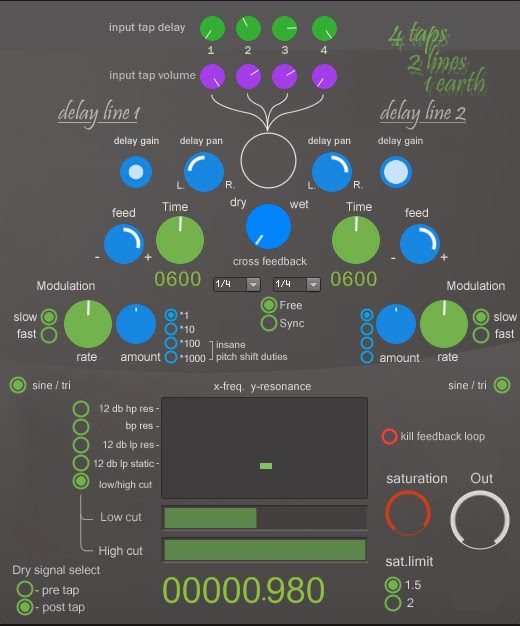Sometimes excellent Reaktor builders pop out of nowhere, and post one or more terrific ensembles to the user library and all we can do is gasp, download and appreciate! Here are three new ensembles by user Ward de Jager.
4 taps, 2 lines, 1 earth is a modulated multitap delay effect that does everything from pitch shifting and dubby delays to flange and chorus. It’s nice looking and nice sounding, and will be providing competition in my plugin folder to Fabfilter Timeless 2. Some of the pitch shift presets remind me of Blackbird, another user library goodie you should check out if you haven’t already.
Cheby Shaper is a waveshaping effect that implements the Chebyshev polynomials. Translation for the non mathematically inclined: it f*cks up your sound nicely. A harmonic editor lets you drag the mouse to fine tune the sound.
Finally, and this may be my favorite, a Modal Bank ensemble. The Modal Bank is a module that lets you do physical modeling in Reaktor – exciting a bank of harmonic overtones with an “exciter” signal. It’s easy to get percussive, chiming, bowed and blown effects with this technique. There’s a tutorial ensemble that ships with Reaktor 5 demonstrating the module, but this one is much nicer. There’s only one snapshot here but new snaps are a breeze to create. Set the parameters of the partials, then set the attack, decay and noise cut off to choose how the “exciter” will sound. Finally, adjust the damping, which will determine how long the overall sound rings on.
Salamanderanagram over at nireaktor.com has a really good tutorial on the Modal Bank you should check out to learn more.
Download all three of these ensembles here.





